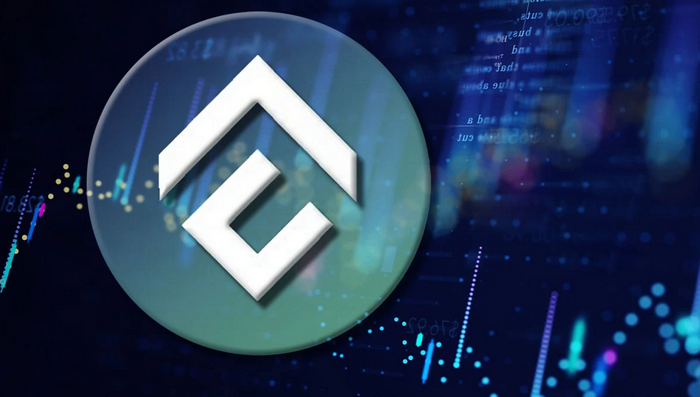-
 Bitcoin
Bitcoin $103,303.7588
-0.27% -
 Ethereum
Ethereum $2,589.4555
1.00% -
 Tether USDt
Tether USDt $1.0001
-0.01% -
 XRP
XRP $2.5604
0.85% -
 BNB
BNB $652.5111
-0.30% -
 Solana
Solana $176.7230
0.96% -
 USDC
USDC $1.0000
-0.01% -
 Dogecoin
Dogecoin $0.2321
0.11% -
 Cardano
Cardano $0.8037
-0.02% -
 TRON
TRON $0.2764
3.12% -
 Sui
Sui $3.8923
-2.65% -
 Chainlink
Chainlink $16.9417
0.69% -
 Avalanche
Avalanche $25.3335
2.02% -
 Stellar
Stellar $0.3063
-0.17% -
 Shiba Inu
Shiba Inu $0.0...01575
0.64% -
 Hedera
Hedera $0.2061
-1.86% -
 Hyperliquid
Hyperliquid $25.5119
0.81% -
 Toncoin
Toncoin $3.2660
-0.64% -
 UNUS SED LEO
UNUS SED LEO $8.8110
2.17% -
 Pi
Pi $1.1387
0.42% -
 Bitcoin Cash
Bitcoin Cash $403.6060
-0.04% -
 Polkadot
Polkadot $5.0058
-0.48% -
 Litecoin
Litecoin $99.7399
-1.19% -
 Monero
Monero $344.8592
2.30% -
 Pepe
Pepe $0.0...01382
-2.36% -
 Bitget Token
Bitget Token $4.7243
-0.59% -
 Dai
Dai $1.0000
-0.01% -
 Ethena USDe
Ethena USDe $1.0007
0.00% -
 Uniswap
Uniswap $6.6285
-3.14% -
 Bittensor
Bittensor $451.1895
-1.47%
how cfx coin are created
The Conflux blockchain leverages a unique consensus mechanism, Tree-Graph, to create CFx coins through block production, miner rewards, transaction fees, and controlled inflation, ensuring network security and platform governance.
Nov 09, 2024 at 03:18 am

How CFx Coin are Created: A Comprehensive Guide
Introduction
Conflux Network is a high-throughput, layer-1 blockchain platform that leverages a unique consensus mechanism called Tree-Graph. Its native token, CFx, plays a pivotal role in securing the network, facilitating transactions, and serving as a governance token. Understanding the process of CFx coin creation is crucial for grasping the fundamental operation of the Conflux blockchain.
Steps Involved in CFx Coin Creation
1. Block Production and Validation
- Conflux Network utilizes a distributed network of nodes to validate and add new blocks to the blockchain.
- Each block contains a set of transactions and other network data.
- Miners, specialized nodes, compete to solve cryptographic puzzles to create new blocks.
2. Miner Reward
- Once a miner successfully solves the puzzle, they receive a block reward in the form of CFx coins.
- This reward incentivizes miners to contribute computing power and maintain network security.
- The block reward is dynamically adjusted based on the network's inflation rate.
3. Transaction Fees
- Users pay transaction fees when they initiate blockchain transactions.
- These fees are collected by miners and included as part of the block reward.
- Transaction fees vary depending on the size and complexity of the transaction.
4. Network Inflation
- To maintain a consistent supply of CFx coins, the network introduces a controlled level of inflation.
- A small percentage of new CFx coins are created and distributed to miners as part of the block reward.
- This inflation is necessary to offset coin losses due to activities like equipment failure or human error.
5. Holder Distribution
- Once CFx coins are created, they enter circulation and can be owned by anyone.
- Users can acquire CFx through exchanges, mining, or developer incentives.
- The distribution of CFx coins among holders affects the network's governance and decision-making process.
6. Minting and Burning
- Conflux allows for the creation of custom tokens on top of its platform.
- These tokens can be minted (created) and burned (permanently removed from circulation) based on specific rules defined by the token creators.
- Minting and burning tokens enable the development of decentralized applications and financial instruments on the Conflux blockchain.
7. Proof-of-Work to Proof-of-Stake Transition
- Conflux originally employed a Proof-of-Work (PoW) consensus mechanism, similar to Bitcoin, for coin creation.
- In 2023, the network transitioned to a Proof-of-Stake (PoS) consensus model, where validators are selected based on the amount of CFx they stake.
- The transition to PoS aims to enhance scalability, security, and energy efficiency.
8. Governance and Community Involvement
- CFx holders are responsible for shaping the future of the Conflux Network through governance proposals.
- Proposals can include changes to network parameters, ecosystem development initiatives, and strategic partnerships.
- By participating in governance, CFx holders can contribute to the long-term success and sustainability of the platform.
Disclaimer:info@kdj.com
The information provided is not trading advice. kdj.com does not assume any responsibility for any investments made based on the information provided in this article. Cryptocurrencies are highly volatile and it is highly recommended that you invest with caution after thorough research!
If you believe that the content used on this website infringes your copyright, please contact us immediately (info@kdj.com) and we will delete it promptly.
- Arctic Pablo Coin (APC) is the Next Big Meme Coin with Explosive Presale Potential
- 2025-05-15 00:25:13
- Bitcoin Solaris Enters Phase 3 of Its Public Token Presale, Prepares to Launch Nova App
- 2025-05-15 00:25:13
- XRP: Can the Momentum Continue Above Resistance?
- 2025-05-15 00:20:12
- The Sui blockchain SUI $3.65 2024-05-14
- 2025-05-15 00:20:12
- Tether Has Just Invested Nearly Half a Billion Dollars in Bitcoin to Launch a New Institutional Management Company
- 2025-05-15 00:15:13
- From Unlock to Utility: The Triggers Behind EIGENLayer Price Momentum
- 2025-05-15 00:15:13
Related knowledge

What is Ethereum’s Slashing mechanism and how to punish malicious behavior?
Feb 20,2025 at 03:08am
Key PointsOverview of slashingDifferent types of slashing in EthereumIncentives and consequences of slashingIdentifying and reporting slashed validatorsOngoing discussions and potential improvementsEthereum's Slashing Mechanism: Punishing Malicious BehaviorEthereum's slashing mechanism is an essential tool for ensuring network security and punishing mal...

What is the verifier node of Ethereum and how to become a verifier?
Feb 19,2025 at 06:00pm
The Verifier Node of Ethereum: A Comprehensive GuideKey Points:What is a Verifier Node?How to Become a Verifier NodeResponsibilities and Rewards of a Verifier NodeMinimum Requirements for Becoming a Verifier NodePotential Difficulties in Running a Verifier Node1. What is a Verifier Node?A Verifier Node is an independent entity on the Ethereum network th...

What is Ethereum’s staking, and how to participate and earn money?
Feb 19,2025 at 04:37pm
Key Points:Understanding Ethereum's Staking MechanismSteps to Participate in StakingBenefits and Rewards of StakingSecurity and Risk ConsiderationsTechnical Requirements and Hardware OptionsPotential Challenges and Troubleshooting TipsFAQs on Ethereum StakingWhat is Ethereum's Staking?Proof-of-Stake (PoS) is a consensus mechanism used in blockchain netw...

What is Ethereum’s DAO (Decentralized Autonomous Organization) and how does it work?
Feb 20,2025 at 03:12am
Key PointsDefinition and Structure of a DAOGovernance and Decision-Making in DAOsBenefits and Use Cases of DAOsChallenges and Limitations of DAOsWhat is Ethereum's DAO (Decentralized Autonomous Organization) and How Does It Work?Definition and Structure of a DAOA Decentralized Autonomous Organization (DAO) is an innovative governance and management fram...

What is Ethereum's multi-signature wallet and how to improve security?
Feb 20,2025 at 02:18pm
Key Points:Understanding the Concept of a Multi-Signature WalletBenefits and Drawbacks of Multisig WalletsRequirements for Setting Up a Multisig WalletStep-by-Step Guide to Generating a Multisig WalletImplementing Strategies for Enhanced Security1. Understanding the Concept of a Multi-Signature WalletA multi-signature (multisig) wallet in the Ethereum e...

What is Ethereum's oracle and how to provide data for smart contracts?
Feb 21,2025 at 01:30am
Key Points:Understanding the concept of oracles in EthereumExploring different types of oraclesDetailed guide on how to provide data for smart contractsAddressing potential challenges and considerationsWhat is Ethereum's Oracle?Oracles are crucial components in the Ethereum ecosystem, enabling smart contracts to access real-world data and off-chain even...

What is Ethereum’s Slashing mechanism and how to punish malicious behavior?
Feb 20,2025 at 03:08am
Key PointsOverview of slashingDifferent types of slashing in EthereumIncentives and consequences of slashingIdentifying and reporting slashed validatorsOngoing discussions and potential improvementsEthereum's Slashing Mechanism: Punishing Malicious BehaviorEthereum's slashing mechanism is an essential tool for ensuring network security and punishing mal...

What is the verifier node of Ethereum and how to become a verifier?
Feb 19,2025 at 06:00pm
The Verifier Node of Ethereum: A Comprehensive GuideKey Points:What is a Verifier Node?How to Become a Verifier NodeResponsibilities and Rewards of a Verifier NodeMinimum Requirements for Becoming a Verifier NodePotential Difficulties in Running a Verifier Node1. What is a Verifier Node?A Verifier Node is an independent entity on the Ethereum network th...

What is Ethereum’s staking, and how to participate and earn money?
Feb 19,2025 at 04:37pm
Key Points:Understanding Ethereum's Staking MechanismSteps to Participate in StakingBenefits and Rewards of StakingSecurity and Risk ConsiderationsTechnical Requirements and Hardware OptionsPotential Challenges and Troubleshooting TipsFAQs on Ethereum StakingWhat is Ethereum's Staking?Proof-of-Stake (PoS) is a consensus mechanism used in blockchain netw...

What is Ethereum’s DAO (Decentralized Autonomous Organization) and how does it work?
Feb 20,2025 at 03:12am
Key PointsDefinition and Structure of a DAOGovernance and Decision-Making in DAOsBenefits and Use Cases of DAOsChallenges and Limitations of DAOsWhat is Ethereum's DAO (Decentralized Autonomous Organization) and How Does It Work?Definition and Structure of a DAOA Decentralized Autonomous Organization (DAO) is an innovative governance and management fram...

What is Ethereum's multi-signature wallet and how to improve security?
Feb 20,2025 at 02:18pm
Key Points:Understanding the Concept of a Multi-Signature WalletBenefits and Drawbacks of Multisig WalletsRequirements for Setting Up a Multisig WalletStep-by-Step Guide to Generating a Multisig WalletImplementing Strategies for Enhanced Security1. Understanding the Concept of a Multi-Signature WalletA multi-signature (multisig) wallet in the Ethereum e...

What is Ethereum's oracle and how to provide data for smart contracts?
Feb 21,2025 at 01:30am
Key Points:Understanding the concept of oracles in EthereumExploring different types of oraclesDetailed guide on how to provide data for smart contractsAddressing potential challenges and considerationsWhat is Ethereum's Oracle?Oracles are crucial components in the Ethereum ecosystem, enabling smart contracts to access real-world data and off-chain even...
See all articles





















![[Market 5.13] BTC continues to play music and dance? #btc #ETH #sol #doge [Market 5.13] BTC continues to play music and dance? #btc #ETH #sol #doge](/uploads/2025/05/14/cryptocurrencies-news/videos/market-btc-continues-play-music-dance-btc-eth-sol-doge/image_500_375.webp)




![[Ronnie Trading Guide]-2025.5.14-Notice: Bitcoin will test the previous high soon~ wait and see~ [Ronnie Trading Guide]-2025.5.14-Notice: Bitcoin will test the previous high soon~ wait and see~](/uploads/2025/05/14/cryptocurrencies-news/videos/ronnie-trading-guidenotice-bitcoin-test-previous-wait/image_500_375.webp)





























































